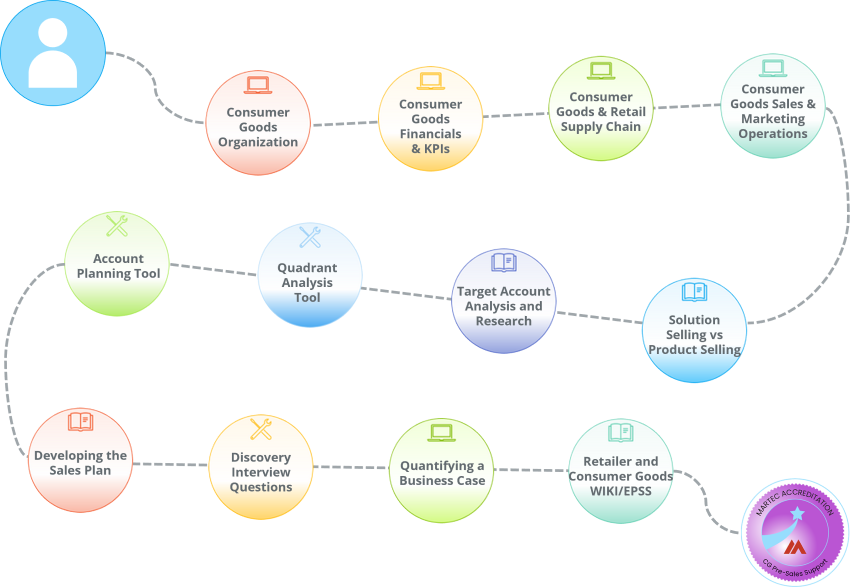Consumer Goods Pre-Sales Support
Consumer Goods Pre-Sales Support Learning Path
This learning path is for those involved in a pre-sales support role, where they are expected to have a deeper industry knowledge than the sales person or account manager. This learning path builds on the Induction learning path, so pre-sales support people should either have studied the Induction learning path before or have the equivalent knowledge from past industry experience.
Select any of the circles along the path to find out more about each step.

The Skills You Will Learn
By studying this learning path, consultants will gain these skills:
- Research the organization of a consumer goods account and identify the key senior management functions and their potential pain points.
- Analyze a consumer goods company's financial statements to identify trends, business challenges and suspect opportunities in the account.
- Perform a detailed KPI analysis to further identify opportunities for performance improvement.
- Analyze the structure of the CG company’s supply chain to identify further areas where performance might be improved.
- Review the structure and processes in the sales and marketing function to identify possible areas for improvement.
- Perform the target account analysis, identify further challenges, and prioritize those that their company can address.
- Carry out a quadrant analysis to match the account’s IT applications architecture against industry best practice to identify potentially missing applications.
- Identify appropriate solutions with the necessary detail to make a persuasive case.
- Identify the quantifiable benefit areas for each opportunity, the likely costs of delivery and implementation, and prepare a draft return on investment case, to be further developed as the sale progresses.
